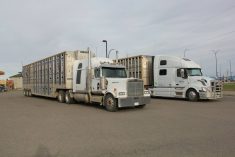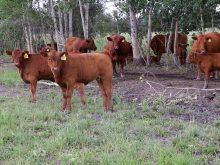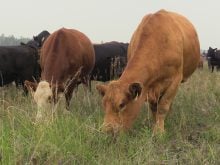RED DEER – Lameness is one of the mains reasons dairy producers get rid of cows.
Sore feet and hoof infections can cost up to $400 per cow because of poor reproduction and treatment costs, said Emily McDonald of Alberta Milk’s research and extension committee.
Sixty-five farmers, seven hoof trimmers and Alberta Milk are working together on an Alberta dairy hoof project that is collecting information on cows’ feet to see how serious the problem is and what can be done to fix it.
Read Also

Meat and plant protein are both good for human health – McMaster study
A study from McMaster University in Hamilton, Ont. has found that meat consumption doesn’t increase the risk of death.
“Dairy cattle lameness is primarily related to the structural damage or infection of the hoof tissue,” McDonald said at the Alberta Farm Animal Care Association annual meeting held in Red Deer March 26.
About 10 percent of cows are removed from the herd because of lameness, but sore feet are also linked to other failures.
McDonald said most cattle that have reproductive problems also have lameness problems.
One-third of cows are culled because of poor reproduction, but they often have trouble walking to feed, to the milking parlour or to be bred.
Participating farms must be on the dairy herd improvement program to provide full information on the age of the cow, pedigree, lactations and production.
Body conformation and locomotion data from Holstein Canada can be correlated later to identify risk factors for foot lesions.
“This can be used to make recommended practices and procedures if necessary or management to reduce lesions,” McDonald said.
Hoof trimmers have been reporting concerns since January.
They use their field experience and a chart from the international bovine lameness committee to classify infectious and noninfectious foot conditions.
Records on almost 4,400 individuals have been examined.
The biggest problem seen so far is the bacterial infection digital dermatitis, which has been found in nearly half the cows.
Sole ulcers, white line lesions and sole hemorrhages are other common problems.
Producers are invited to join the project to build a larger information base.















